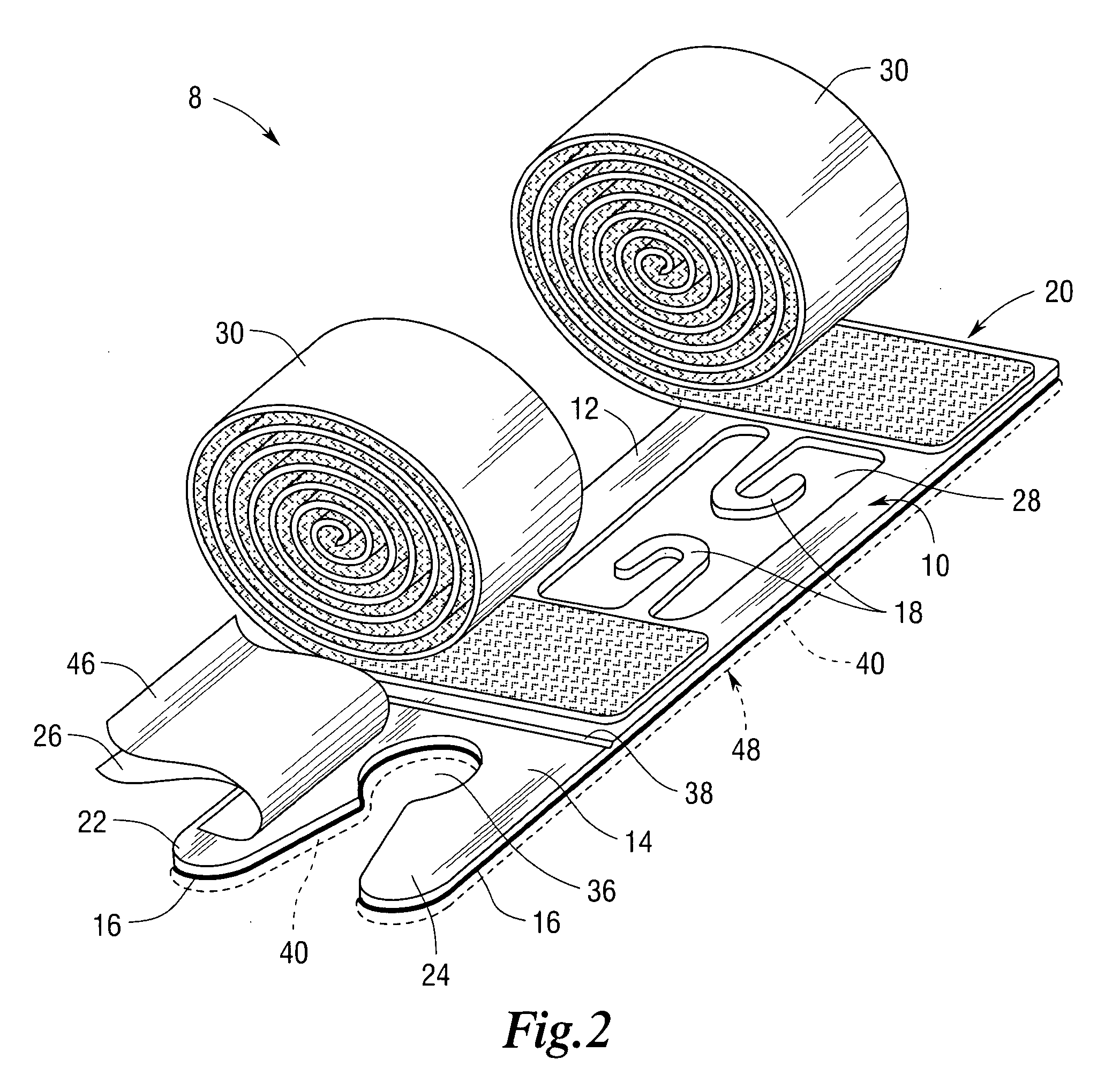Medical appliance stabilization device and method for using same
a technology for stabilizing devices and medical appliances, applied in medical science, surgery, diagnostics, etc., can solve problems such as difficulty in application, current adhesives, and inability to clean and dry surfaces, and achieve the effects of easy removal, high stability, and convenient deploymen
- Summary
- Abstract
- Description
- Claims
- Application Information
AI Technical Summary
Benefits of technology
Problems solved by technology
Method used
Image
Examples
Embodiment Construction
[0018]As described above, the present teachings disclose devices and methods for rapidly attaching and stabilizing a plurality of invasive and non-invasive medical appliances.
[0019]As referred to in this application, the term “medical appliance” refers to invasive devices such as intravenous catheters and tubing, urinary catheters, catheter leads, pacemaker and defibrillator leads, and wound drainage systems. The term also refers to non-invasive devices such as oxygen and cardiac monitoring systems.
[0020]Referring now to the Figures, there is shown a device 8 for stabilizing a medical appliance on a body part of a subject in accordance with the present teachings. The stabilization device 8 includes a base or platform 10 having a perforate inner surface 12 bordered by an outer surface 14 having corresponding edges. The inner 12 and outer 14 surfaces are disposed on an upper plane 20 of the platform 10. In various embodiments, the outer surface 14 edges are blunted or are curled to av...
PUM
 Login to View More
Login to View More Abstract
Description
Claims
Application Information
 Login to View More
Login to View More - R&D
- Intellectual Property
- Life Sciences
- Materials
- Tech Scout
- Unparalleled Data Quality
- Higher Quality Content
- 60% Fewer Hallucinations
Browse by: Latest US Patents, China's latest patents, Technical Efficacy Thesaurus, Application Domain, Technology Topic, Popular Technical Reports.
© 2025 PatSnap. All rights reserved.Legal|Privacy policy|Modern Slavery Act Transparency Statement|Sitemap|About US| Contact US: help@patsnap.com



